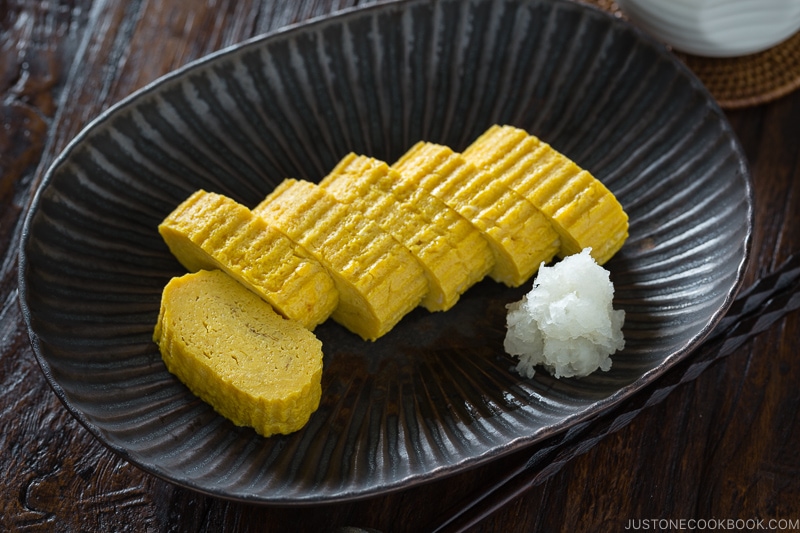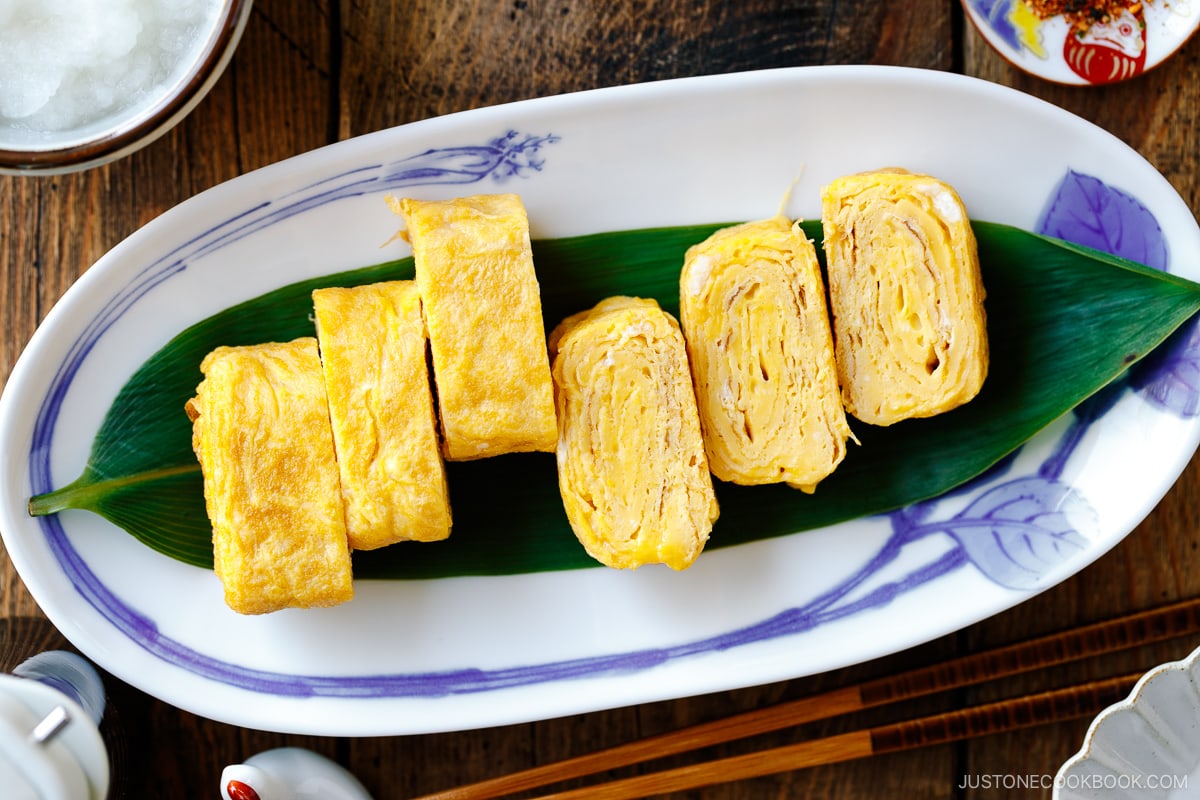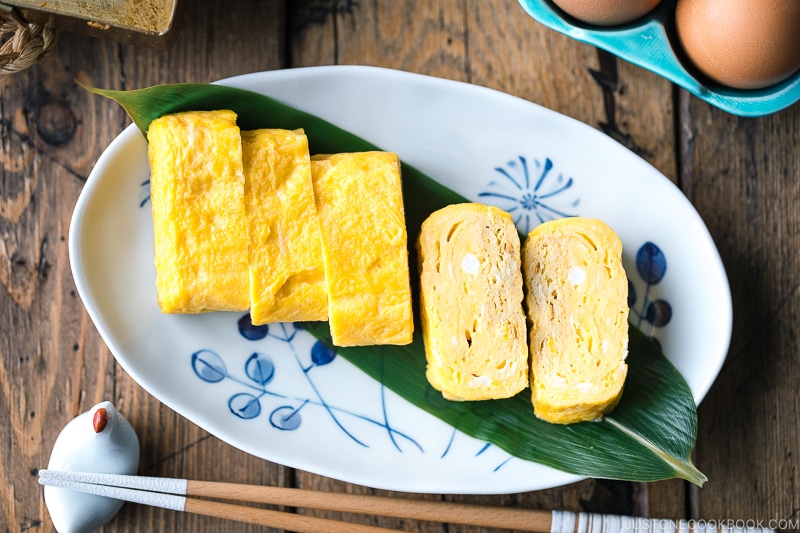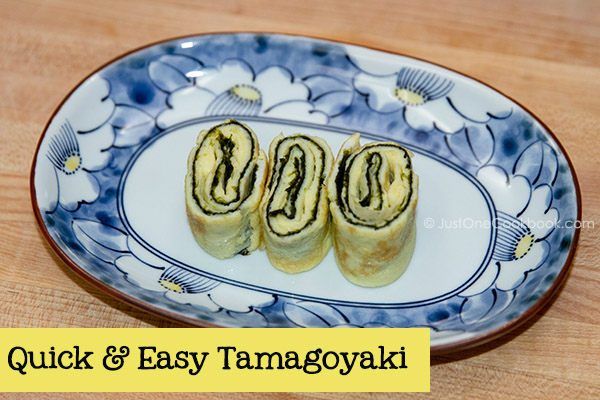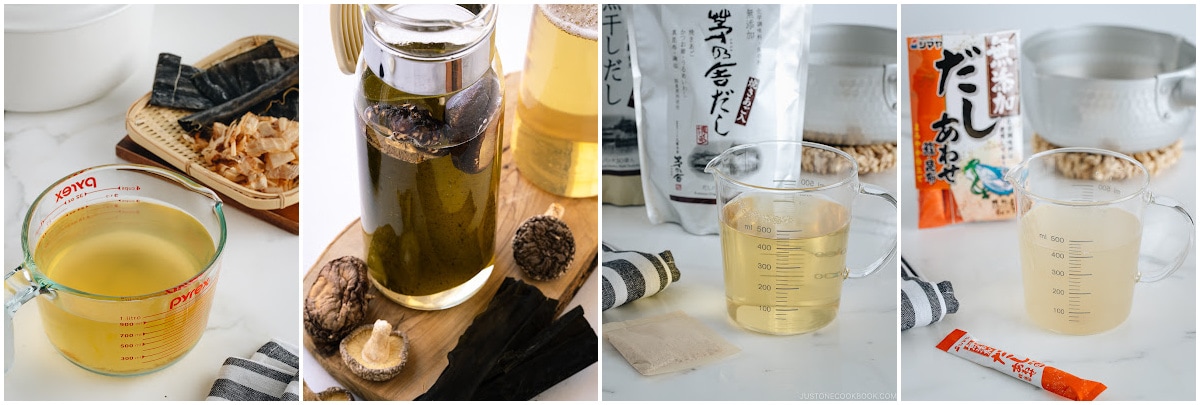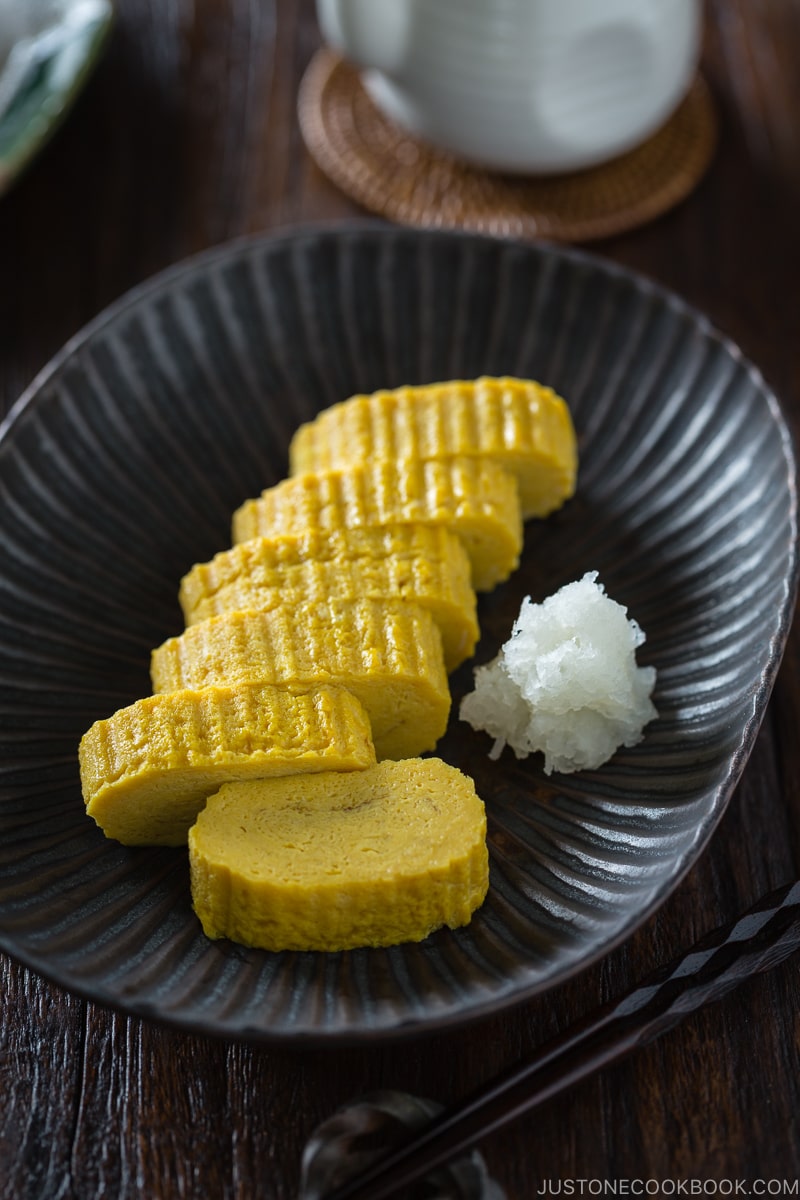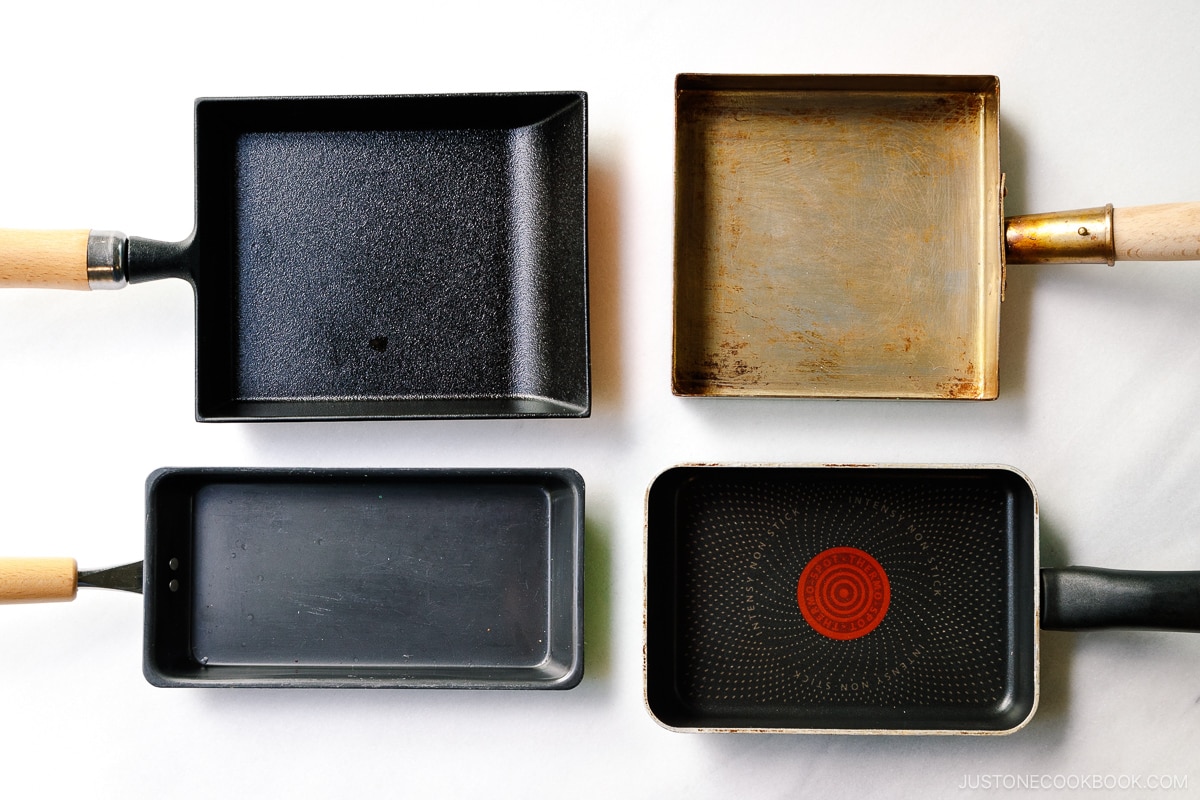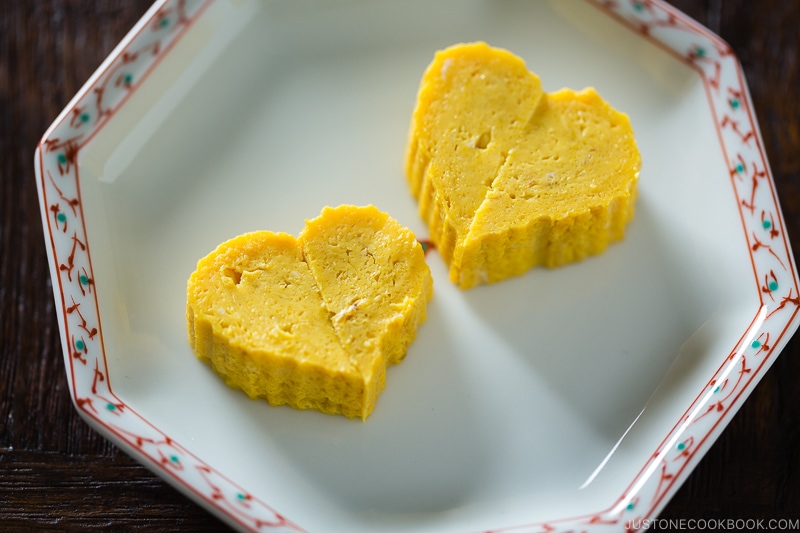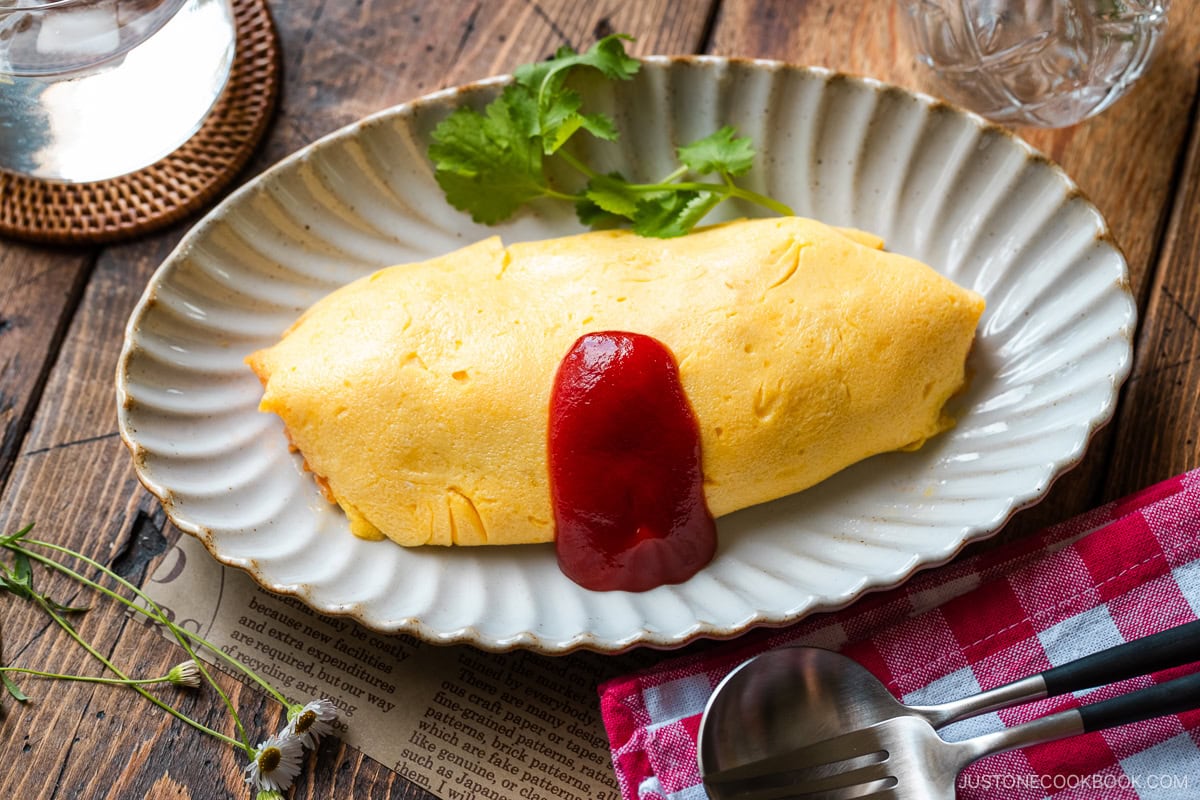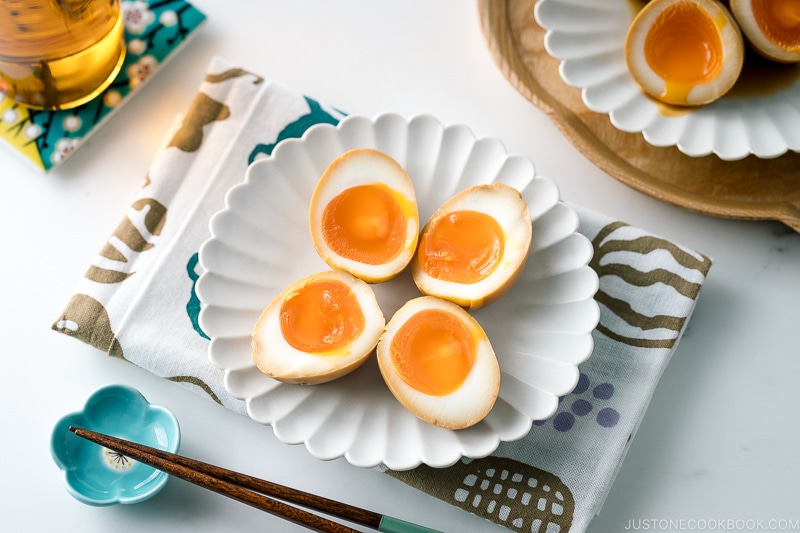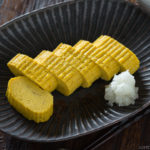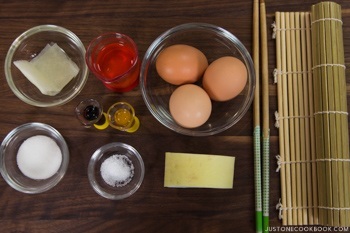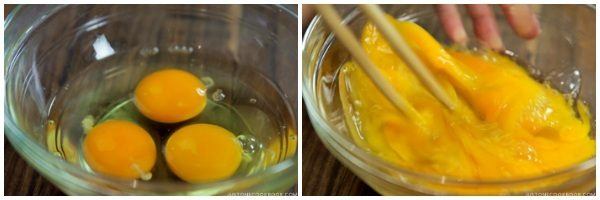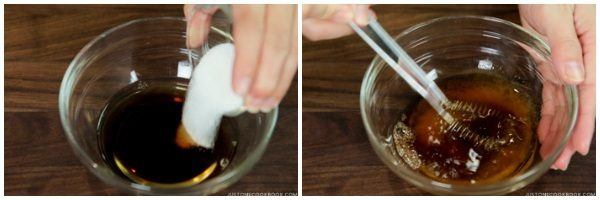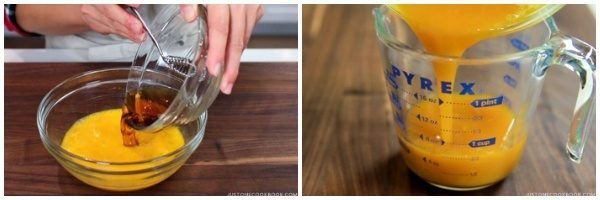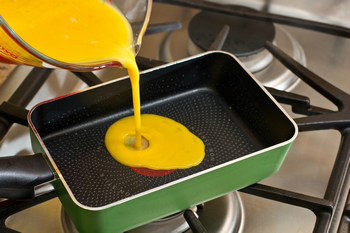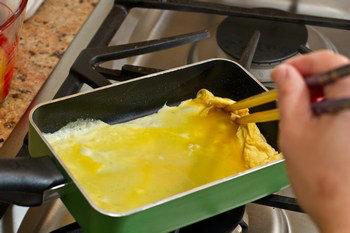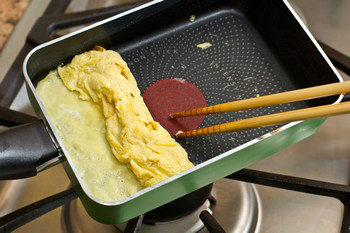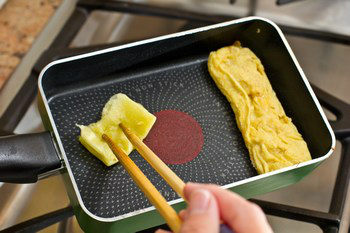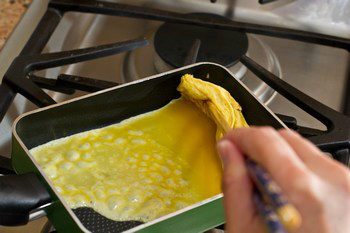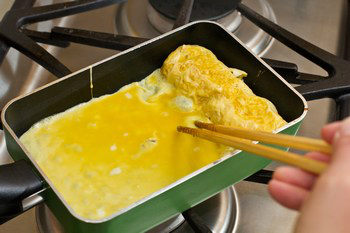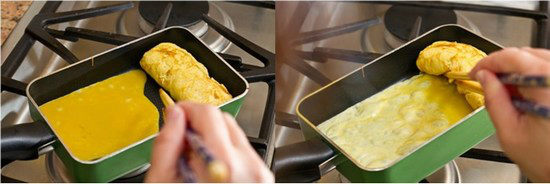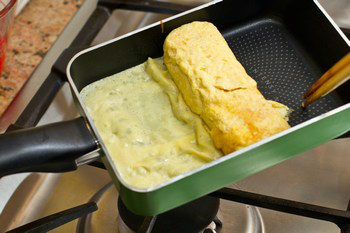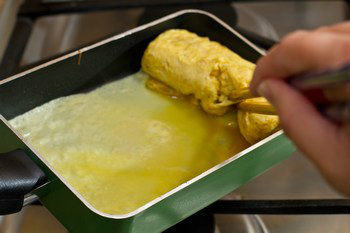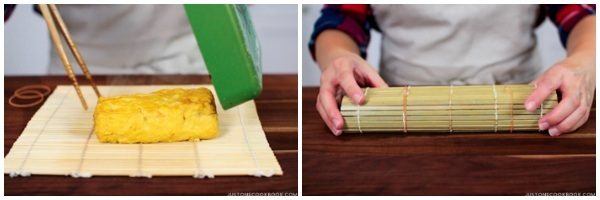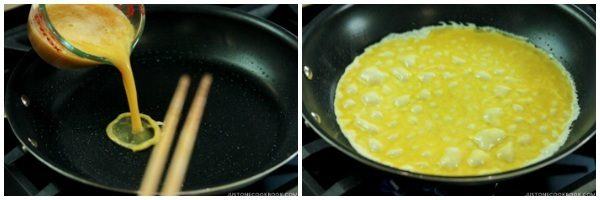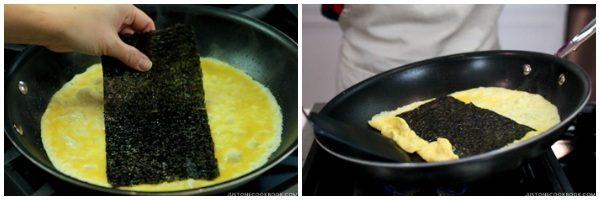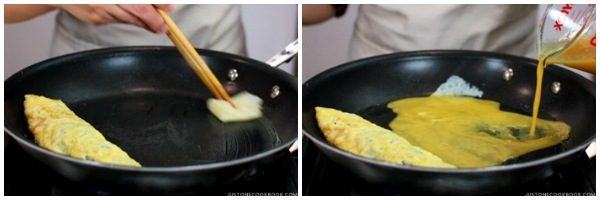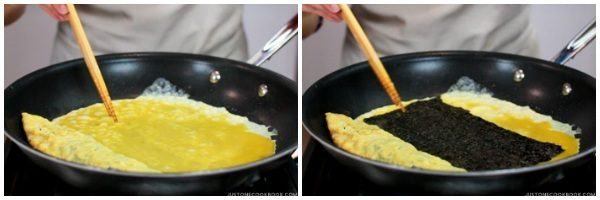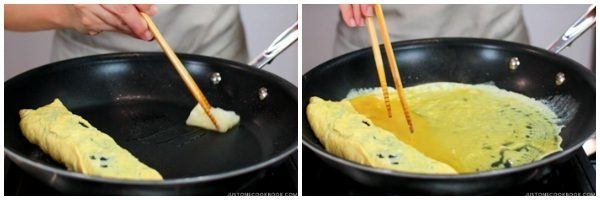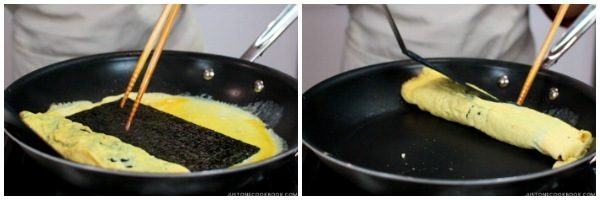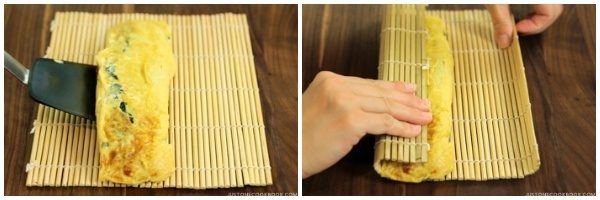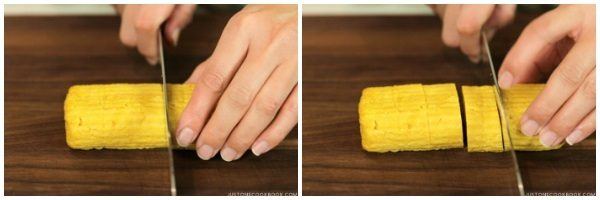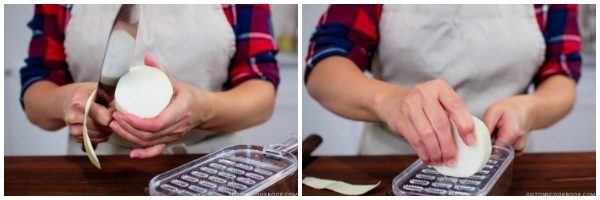Tamagoyaki (卵焼き or 玉子焼き) is a sweetened Japanese omelette that resembles mini bars of golden pillows. With a slightly sweet taste and custardy texture, tamagoyaki is well-loved among Japanese children and adults. You’ve most likely tasted these rolled eggs in a Japanese breakfast as a source of protein, as a side dish in a bento (Japanese lunch box), or atop sushi. Today, let’s learn how to make a dashi-forward tamagoyaki called Dashimaki Tamago (だし巻き玉子)! There are many types of tamagoyaki, and this advanced version is the most challenging to make since the egg mixture is quite watery. Don’t worry; I’ll guide you every step of the way with photos and detailed instructions.
What is Tamagoyaki?
In Japanese, tamago means egg, and yaki means grill, so tamagoyaki translates to “grilled egg.” To make this classic dish, we roll up layers of thin egg crepe in a frying pan, wrap it into a log shape, and slice it into bite-sized pieces that you can pick up with chopsticks. Unlike the typical Western omelette, Japanese tamagoyaki uses an egg mixture flavored with dashi, soy sauce, mirin, and sugar. This seasoning gives it a lightly sweet and savory taste.
Tamagoyaki Variations
Tamagoyaki (玉子焼き, 卵焼き) is a general umbrella term for various types of Japanese rolled omelettes. It can be dashimaki or atsuyaki depending on the region.
Easy Tamagoyaki Recipes for Beginners
If you’re a beginner cook or prefer a simplified method, here are two easier recipes:
Quick & Easy Tamagoyaki — For one serving, perfect for a lunch box. 3-Ingredient Simple Tamagoyaki — No dashi required, so it’s fast and easy to make.
If you have never tried making tamagoyaki recipe before, skip this post and practice rolling the omelette with my 3-Ingredient Simple Tamagoyaki first.
Ingredients You’ll Need for Dashimaki Tamago
You just need simple Japanese pantry ingredients for this recipe. To find the right balance of sweet and umami flavors, feel free to adjust the seasonings to suit your taste:
large eggs dashi (Japanese soup stock) – see the next section seasonings – soy sauce, mirin, sugar, and salt (adjust to reduce the sodium) for the garnish – daikon radish and soy sauce
3 Ways To Prepare Dashi (Japanese Soup Stock)
Because the dashimaki tamago uses more stock, preparing tasty dashi creates a more delicious final dish. I recommend one of these three methods:
Kombu and katsuo dashi made from scratch (takes 20 minutes) Vegan/vegetarian dashi made from scratch (takes 20 minutes) Dashi made with a dashi packet (takes 3 minutes)
Dashi made with dashi powder may cut the prep time and total time since it only takes 1 minute, but I don’t recommend it as the flavor is not robust.
How To Make the Best Dashimaki Tamago
Here’s a quick overview of the steps. Read the recipe card below for detailed tips, techniques, and photos. Serve it as part of a Japanese breakfast along with a bowl of hot rice, miso soup, grilled salmon fillet, and Japanese pickles.
5 Cooking Tips for the Best Tamagoyaki
Tamagoyaki requires some practice to get right, but you will get better each time you make it. Here are a few helpful tips:
Tamagoyaki Pan for a Classic Shape
Rolled omelette is a staple in Japanese home cooking that we make for breakfast and the bento box, so it’s worth investing in a special pan. Tamagoyaki pans are either square or rectangular, so you can easily make the Japanese rolled omelet into a log shape. Here are the various types of tamagoyaki pans I’ve tried in the past:
nonstick tamagoyaki pan copper tamagoyaki pan carbon steel tamagoyaki pan cast iron tamagoyaki pan (my favorite since 2024)
Can I Use a Round Frying Pan for Tamagoyaki?
Yes! You don’t need a special tamagoyaki pan if you are not aiming for the classic shape. A tamagoyaki pan definitely helps to make a thick rectangular log, a round frying pan will work. I demonstrate both methods in my video and the step-by-step recipe images below. For a thicker tamagoyaki, use a 9- or 10-inch nonstick frying pan. In the recipe below, I used my big 12-inch pan and it turned out flatter, as you can see. If you only have a 12-inch pan, you can double the recipe to solve this issue. Don’t worry about it if you don’t mind the flat shape.
More Tamago (Egg) Recipes
Omurice (Japanese Omelette Rice) Ajitsuke Tamago (Ramen Egg) Onsen Tamago (Japanese Hot Spring Eggs) Hanjuku Tamago (Perfect Soft-Boiled Eggs) Tamago Sando (Japanese Egg Sandwich)
Wish to learn more about Japanese cooking? Sign up for our free newsletter to receive cooking tips & recipe updates! And stay in touch with me on Facebook, Pinterest, YouTube, and Instagram. Editor’s Note: This post was originally published in March 2012. The video and new photos were added in January 2016. The post content was updated in August 2019.

